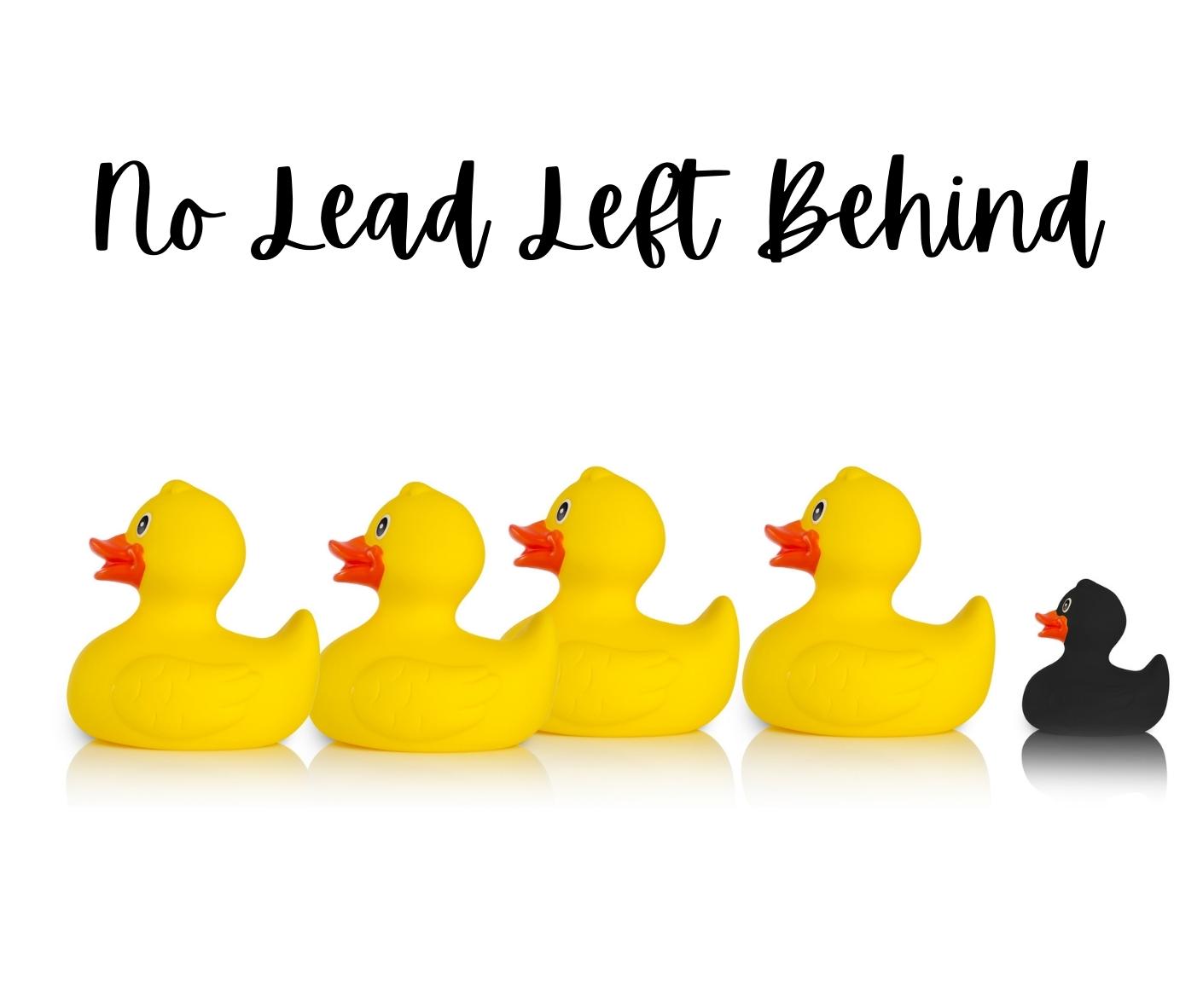What Does No Lead Left Behind Really Mean?
 While the online sales program has evolved a lot over the past 20 years since it first started to show up as a position for new home builders, there are some things that remain the same. Though we have gotten away from some of these things over the last couple of years. It’s time for a few reminders.
While the online sales program has evolved a lot over the past 20 years since it first started to show up as a position for new home builders, there are some things that remain the same. Though we have gotten away from some of these things over the last couple of years. It’s time for a few reminders.
Remember, the online sales counselor is NOT a secretary, and their true role is to develop the leads and set strong appointments for the site sales agents with strong leads while nurturing others until they “buy or die.” Well trained online sales agents can shorten the time a sales agent works with a particular home buyer and allows them to work stronger leads and convert more sales.
Online sales counselors still need to work EVERY inquiry they receive. This means that there needs to be a strong effort made to speak with everyone who comes across the OSC’s digital doorstep whether that’s via website form fill, third party lead, phone call, live-chat, chat-bot, or so much more. We have more and more lead sources than we did 15+ years ago, and that’s why it’s important to take a systematic approach to trying to engage each individual person and treat them as a human.
This may mean it’s time for Online Sales Counselors to:
- Eliminating some of your automation and go back to personalized follow up especially at the beginning of our engagements.
- Making sure every follow up process, whether it’s 30 days or 360 days, has points where you do evaluations.
- Ensure that everyone is on some form of follow up process even if they haven’t replied in 30, 60, or 90 days. We need to continue to make the effort.
- Be sure no one is dropped after 2-4 attempts to contact.
- Audit online processes to make sure we have a diversity of follow up processes that change depending on the lead generating channel.
- be discerning in how they use automation. It must feel personal, and we must be responsive when people reply
We’ve had an embarrassment of riches over the past couple of years and we’ve let many, many people slide through the cracks and into the abyss that is our database. But now, (And if you have a lot of manual entry they haven’t even made it into the database.) As traffic slows down a bit and normalizes, it’s time to get back to the basics of being an OSC.
We should not be adopting a “one and done” mentality. i.e. all too often these days I see online sales programs reducing down their touch points and not making an effort with anyone they’ve decided “is not worth their time.”
Remember, the basis of an OSC is to be that farmer, farming leads, taking the time, energy, and effort to make them grow. People may not be responsive right away, but we do have ways to track their activity. And if they are not opening our emails or clicking our links, it could be that they are not getting our emails and we are bouncing to junk. That’s why it’s so important to utilize a multi-pronged approach.
The 20/60/20 Rule is Still Alive and Well
Remember, 20% of people will buy no matter what. We have what they want, and they know what they want. These are the easy cream on the top. 20% of people won’t buy no matter what. We don’t have what they want, need, and desire within their parameters no matter how hard we try we aren’t going to fit. But 60% will or won’t buy depending on our efforts, how they are treated, and how they feel the overall experience is with the builder. It is up to the OSC program to bring in that 60% and start their experience with a strong positive impression.
A no lead left behind mentality should be trying to get as many people to communicate with you as possible. If someone has taken the time to fill out a lead form or make a call, we should have a follow up plan in place for getting them to the next step of the buyer’s journey. Which is to meet with our sales experts out on sight.
But as an OSC it’s important to make sure we are only sending qualified leads. That means taking the time to build rapport, ask important questions, find out timelines, areas, and price ranges. What are the buyers wants, needs, and desires. What motivates them?
The more we can make this our priority the less likely we will have leads slipping through the cracks. The world we’ve lived in for the past two years has relied on the demand far exceeding the time we could spend with each individual.
We need a mental mind-shift back to great customer service, and a no lead left behind mentality.